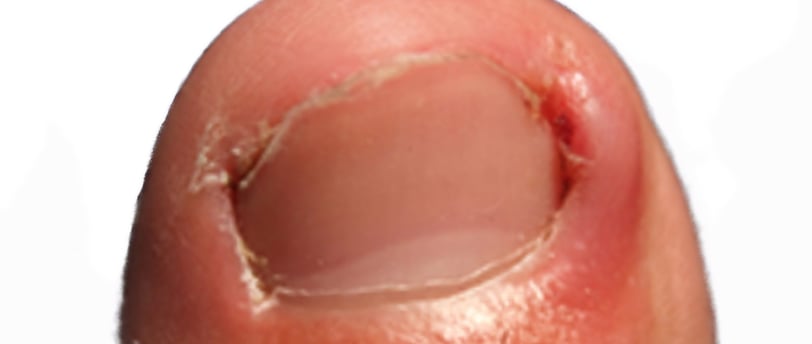How to Treat Ingrown Toenail Infections
Understanding In growing Toenails I Symptoms of Ingrown Toenail Infections I Causes of Recurrent Ingrown Toenails I Prevention Tips I Treatment Options I
Dr. Mufazzal Haidry
7/22/20242 min read


Dealing with recurrent ingrown toenail infections can be a painful and frustrating experience. Here’s a comprehensive guide on understanding the condition, preventive measures, and various treatment options available.
Understanding In growing Toenails
An ingrown toenail, also known as Onychogryphosis, occurs when the edge of a toenail grows into the surrounding skin, causing pain, swelling, and sometimes infection. The condition commonly affects the big toe. Recurrent cases may require more comprehensive treatment and prevention strategies.
Symptoms of Ingrown Toenail Infections
Inflammation (redness and swelling) around the toenail
Pain and tenderness in the affected area
Pus or drainage if the nail punctures the skin and causes an infection
Causes of Recurrent Ingrown Toenails
Improper nail trimming: Cutting nails too short or rounding the edges can encourage nails to grow into the skin.
Tight footwear: Shoes that are too tight or narrow can press the nail into the skin.
Toe injuries: Stubbing your toe or other injuries can cause nails to grow improperly.
Genetics: Some people are more prone to ingrown toenails due to inherited nail shapes or other factors.
Prevention Tips
1. Proper Nail Care: Trim your nails straight across and avoid cutting them too short. Use clean, sharp nail clippers.
2. Footwear: Wear shoes that fit well and provide enough room for your toes.
3. Foot Hygiene: Keep your feet clean and dry to prevent infections. Clean your feet in water with a hydrogen peroxide solution. Mix one pint of hydrogen peroxide in one gallon of warm water. Soak your feet for about 2030 minutes once or twice a week. This will help remove fungus from the nails.
4. Avoid Trauma: Be cautious to avoid injuries to your toes.
5. Change Socks Daily: This helps maintain foot hygiene and prevent infections.
Treatment Options
Warm Soaks: Soak your foot in warm, soapy water several times a day to reduce swelling and relieve pain.
Anti-inflammatory Medicines: Take painkillers like Diclofenac Sodium (50mg) every eight hours to reduce pain and swelling.
Cover the Wound: Clean the infected area with an antiseptic like Dettol or Savlon and apply Povidone (Betadine) ointment. Cover with a gauze piece and secure with a 3inch bandage. If pus formation has started and you notice oozing, it’s time to consult a doctor as you may require antibiotics.
Ingrown toenail infections can be a recurring problem, but with proper care and preventive measures, you can minimize the discomfort and prevent future occurrences. Take care of your toes to avoid unnecessary pain and complications.
